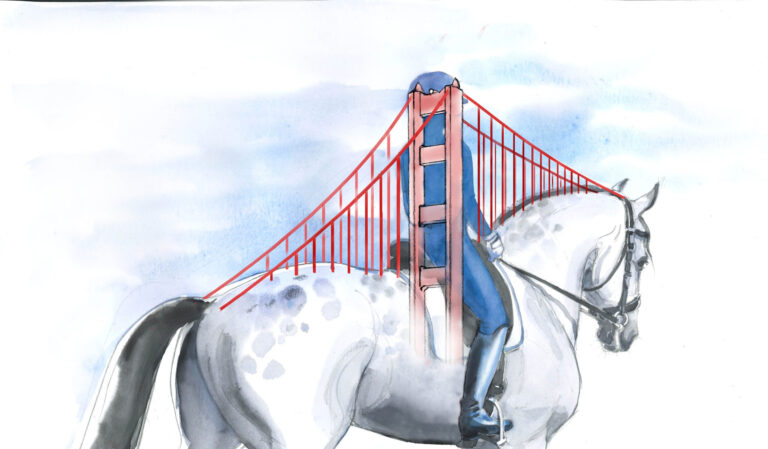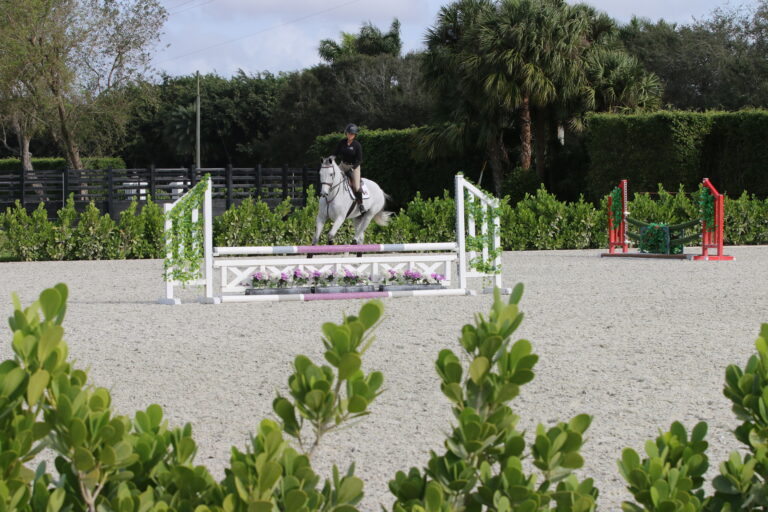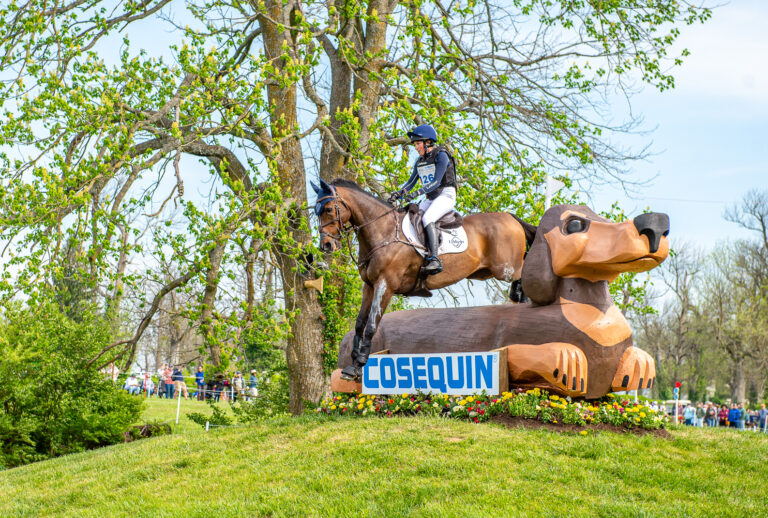When you want to see the best of the best, you go to a destination event. Whether it is Wimbledon, Indianapolis 500 or the Super Bowl, you are going to see the best in competition. If you are horse crazy and want to watch the best, the Land Rover Kentucky Three-Day Event in April is the place for you. This year Great Britain’s Oliver Townend returned to the Kentucky Horse Park and joined a very select group, those riders who have won the LRK3DE for the second time in a row on the same horse. When your name is mentioned along with Bruce Davidson Sr., Michael Jung and Kim Severson you are flying at a very high altitude indeed. (Yes, several other riders are multiple winners but on different horses and/or in different years.)
Although we go to destination events to see who wins, this year had a feeling of history repeating itself—not just in Ollie’s win, but in the now decade-long drought the U.S. has suffered on its own home grounds. An American last won in Kentucky in 2008, and even then the victory went to our favorite Australian free agent Phillip Dutton. Fortunately for our international results, Phillip has been a citizen for a decade and a stalwart of our team. We have had several heart-breakingly close second places in Kentucky since 2008. Boyd Martin, our new favorite Australian free agent (and now also a citizen), gave us a thrill this year by keeping the pressure on Ollie until the very last. But Ollie has “Sunday Afternoon Nerves,” meaning he can stand the pressure of knowing that he has to jump clean to win—and win he did, again.
But he had to jump a lot of very special cross-country jumps to do it, fences designed by one of the world’s best. As you can see, in this context “best of the best” doesn’t just apply to the competitors. Derek di Grazia’s 2019 LRK3DE course was perhaps his best effort to date. This bodes well for the future of the sport because he will design the cross-country course for the 2020 Tokyo Olympics. I’m a big fan of Derek’s work because his courses “walk soft but ride hard.” He uses terrain as a key element of his questions. All course designers use height, spread, shape, appearance and (unfortunately) distance to get their result. I say “unfortunately” because a recent trend has been to build predictable distances between the obstacles in a cross-country combination. This has reduced much cross-country riding to a mathematical, predictable exercise. How mathematical? At the final preparation event for this year’s LRK3DE, a cross-country rider galloped by me, jumped an obstacle’s ‘A’ element, counted to four out loud, jumped the ‘B’ element and galloped away screaming how proud she was of her horse and their performance to date. I suppose it is a modern attitude to not only settle for the mediocre but to admire it.
I have spoken out against this “ride by numbers” approach because it requires neither intuition nor feel, just a mind-numbing conformity to the measuring tape. Certainly, the distance between obstacles is an important element of difficulty—but it is a far more sophisticated task to turn between two obstacles when they are on a mild slope and your horse is starting to tire. Then you need to know your horse, not just the distance between two obstacles.
Derek and a few others are starting to design what I call “Obamacare” distances: You have to jump into them to know how to jump out well. Knowing the mathematical solution is no longer enough. Now, you need to know your horse—his stride length, his fatigue level and his ease or difficulty turning left or right. You can’t jump Derek’s courses with a plan. You need several plans, and you need to be able to choose the correct plan instantly. (Derek has heard the old joke about how there are three kinds of riders: those who make it happen, those who watch it happen and those who wonder “what happened?”)
The cat-and-mouse game between designers and riders continues, but the growth of the sport and the increasing prize money motivate riders to study every detail that could boost their chances of success. They rehearse at home for various cross-country problems far more often than they did before the change from Classic to short format. I visit high-level facilities around the country, and it is a rare site that does not have simulations of various signature obstacles such as a Normandy Bank or double mounds, all with portable corners, wedges and angled fences. These portables can be arranged to imitate a future question.
Nowadays, the course builders at Kentucky can barely finish a new complex at the Horse Park before a flock of spies from various top-class riders around the country descend with cameras and measuring tapes. You can bet that whatever Derek builds will be practiced before the actual competition. This is not breaking news to designers, and many of their signature obstacles will not have the problematic portable fences placed until the last week or so, giving riders little time to practice.
It is a tribute to our designers that they can test riders yet provide a safe and educational experience for the horses. Once again, the LRK3DE was the place to be this year. I can’t wait until 2020.
Oliver Townend and Cooley Master Class
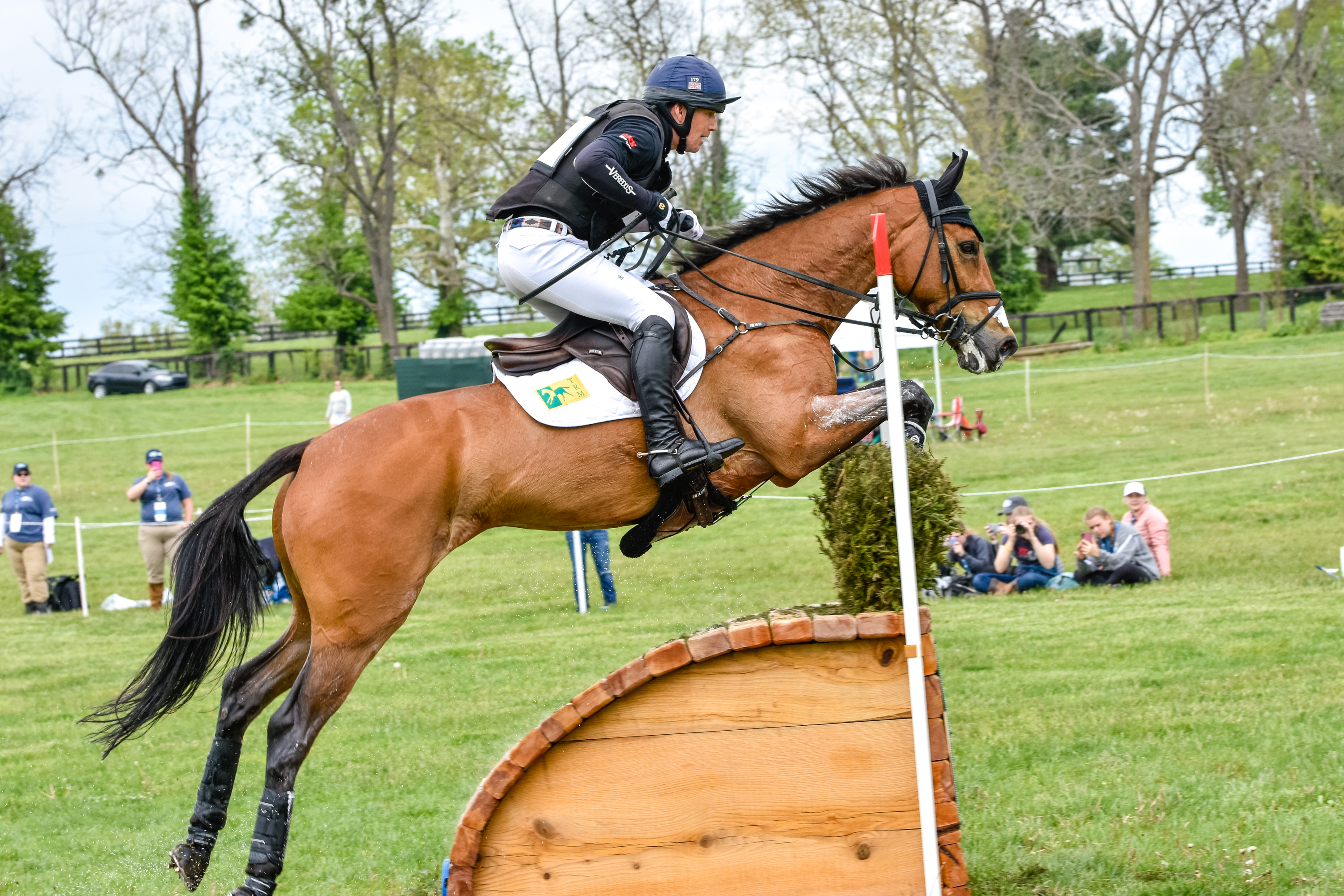
Ollie Townend’s recipe for winning is pretty simple: He wins the dressage, goes clean and fast across country and doesn’t knock down any show jumps. If you can do that, I promise you’ll win. It’s simple—just not easy.
Ollie has been on fire recently. A week after this photograph was taken, he set a new dressage record at Badminton. His excellent results are based on dressage, and that’s as it should be. However, people sometimes don’t notice that when riding cross country, Ollie rides as close to the edge of control as anybody competing today. He is keenly aware that the cross-country test is a race against the clock.
Shown here jumping a narrow wedge-shaped fence at 11C, the final element of the Rolex Grand Slam Challenge, Ollie and Cooley Master Class (Coolio) are obviously in a hurry. There was a drop over a log at 11B, then two strides down a slight slope to this obstacle. In a combination, if there are fewer than three strides between obstacles after a drop, I think riders have to long-rein their way through; Ollie gets a pass from me for his long reins. But notice that while his reins are long, they are not loose—he is still in touch with Coolio. His lower-leg position makes him stable in the air and his horse is in front of his body, his seat is close to the saddle, and as evidenced from his eyes, he is planning to land at the gallop.
We talk about riders learning how to ride well over five-star courses, but sometimes we forget that horses learn, too. Coolio is skimming through the brush because he has learned that course designers use brush as a safety feature. Inexperienced horses will look at the top of the brush and jump that height, while more experienced horses know they can safely “brush” through the top few inches. Modern designers occasionally build a wall of brush, then trim a narrow opening at one end or the other, attempting to force riders to jump that exact part of the obstacle, thus increasing the risk of a runout. However, experienced horses are starting to lean on the taller part of the brush in the same way that a smart polo pony will put his shoulder into his opponent—they know they can push their way through. Horses continue to amaze me.
Boyd Martin and Tsetserleg
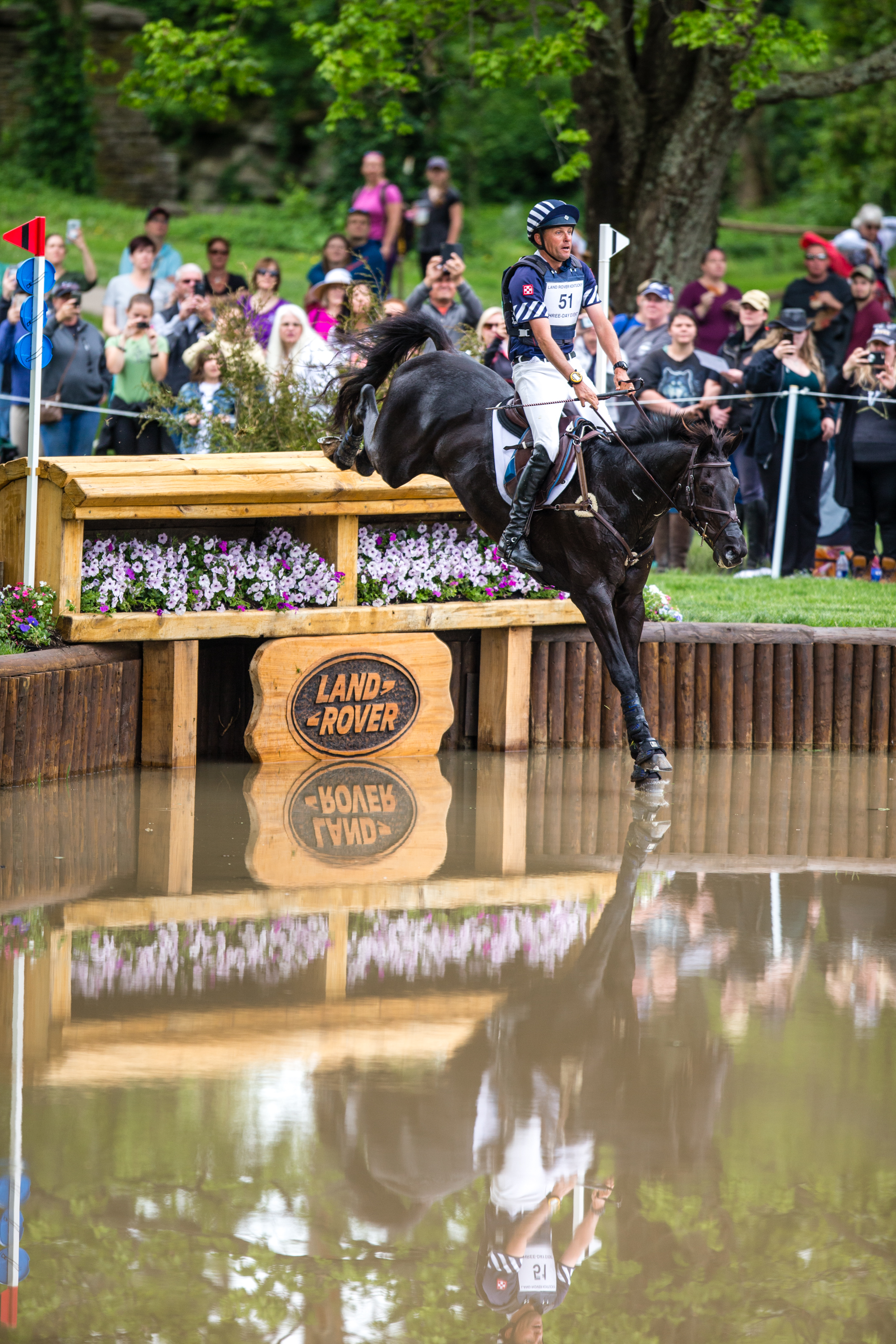
Boyd Martin and Tsetserleg (Thomas) are jumping into the Land Rover Head of the Lake the way it ought to be jumped. Following an aggressive approach to Fence 17A and a powerful jumping effort, Boyd has slipped his reins correctly, allowing Thomas to stretch his head and neck. They are both in balance, and they are both veterans with their eyes firmly focused at the next obstacle. They know there is more to do than land like a feather over a 6-foot-6 drop into water. We will have to wait a year to find out if Boyd’s near-as-anything finish just behind the 2019 winner is the start of a new trend among our elite U.S. riders or yet another brief glimmer of possibility that does not consistently produce the satisfaction that winning brings.
At competitions in the past, Boyd has ridden an incredible number of horses pretty well. However, this year he seems to have made a conscious decision to ride fewer horses really well, and his upper-level results are starting to show it. I’m an optimist, and I think we will be seeing a resurgence of U.S. riders at the international levels. We have some good riders who have now had a taste of five-star competition, and they are hungry for more. I can’t wait for the Land Rover Kentucky Three-Day in 2020.
Lauren Kieffer and Paramount Importance
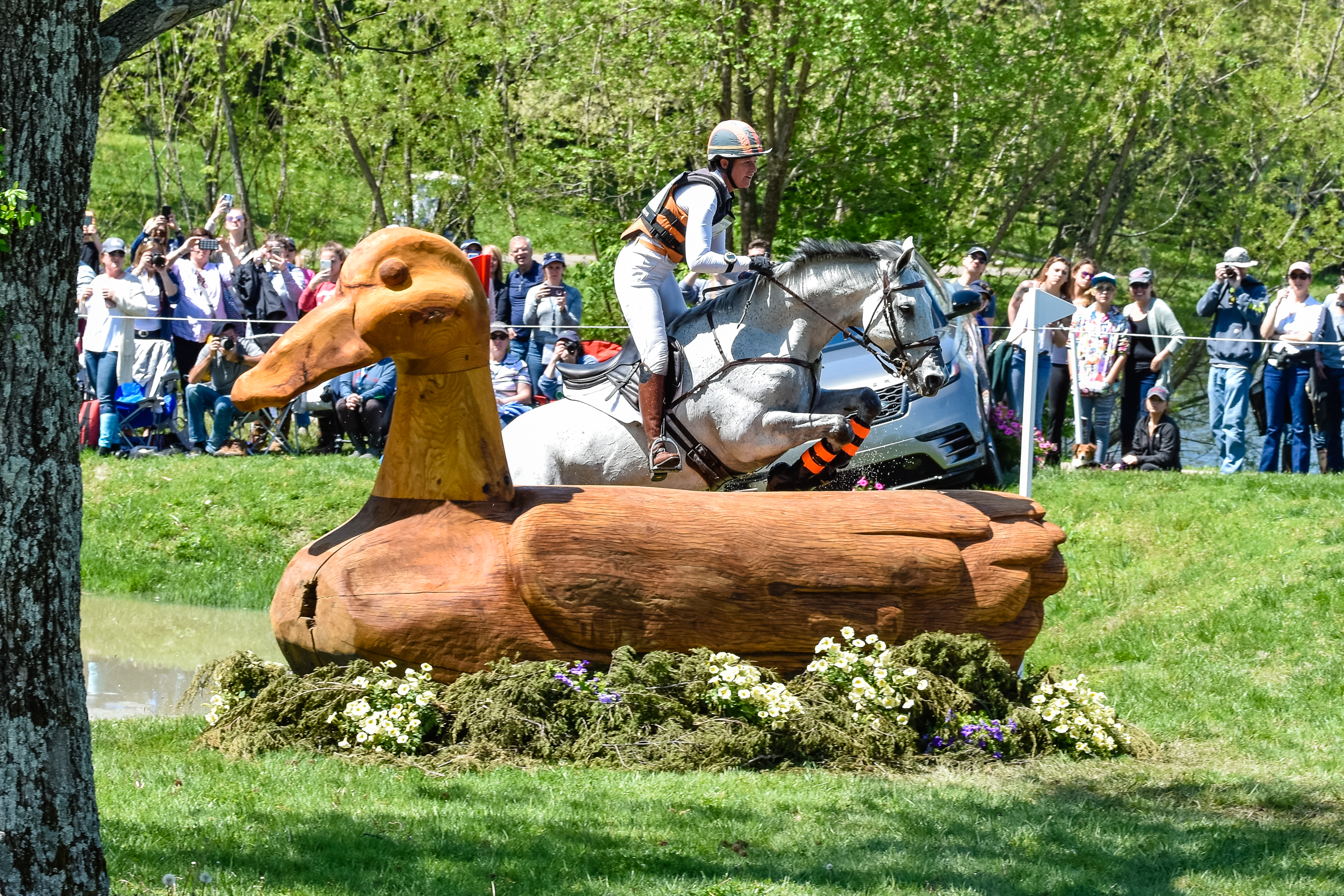
An Olympic veteran, Lauren Kieffer, who finished eighth on Paramount Importance, has all the tools to win at this level. However, some of her tools need sharpening, as is apparent here at 17B, the Land Rover Head of the Lake. When the rider is separated from her horse by too tall a stance, errors of communication creep into their dialogue. For example, because Lauren is not comfortable in the air, she is late turning her eyes towards 18A, just off to her right. This will cause her to lose time around the turn—and at this level, every second counts. Her slightly high hand position is caused by not adjusting her reins after she landed in the water. When you need to catch up with your horse’s motion, you should lower your hands, not raise them.
I look at 7,000 to 8,000 photos of the Kentucky cross-country phase every year to show you a few of the most interesting ones. I’ve done this feature for Practical Horseman for the past 13 years. That’s a lot of photos. When you see that many images, year after year, you start to see consistent habits, and our U.S. riders have some bad habits I’d like to change. If I had a magic wand, what would I change about our modern techniques? It’s pretty simple: Here are three habits that need to go away in order to improve our cross-country riding. One, we need to go forward to find our jumps, not lift our hands. Two, we need to ride with our stirrup leathers a couple of holes shorter. Three, (and I’m begging our riders on my knees with tears in my eyes) please, PLEASE learn how to get your reins back. It is a simple, easy motion that puts you back in control of your horse’s direction. If the course designer gives you more than three strides after a big drop, you should have your reins back. End of story.
Leslie Law and Voltaire De Tré
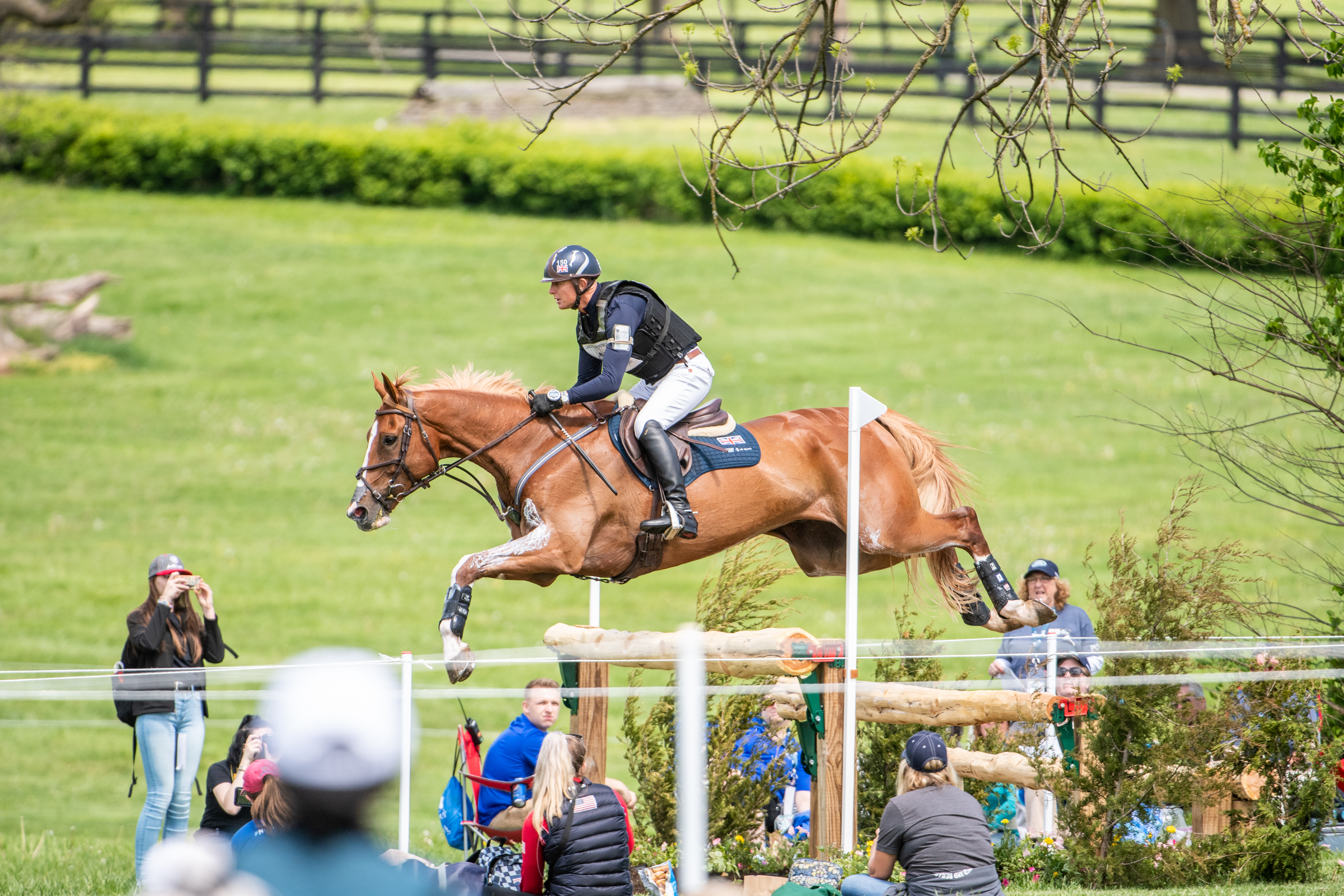
My preview prediction about Leslie Law and Voltaire De Tré (Splash), who finished in 10th place, said something about how after a 10-year absence from Kentucky, even individual gold-medal winners (2004 Athens Olympics) have to get the rust off their medals. Looks like it took Leslie, who rides for Great Britain, only a few jumps for his medal to start to sparkle again. Shown here over an enormous triple bar at Fence 6 (the top rail is 3-foot-11 with a 6-foot-7 spread at the base), he and Splash are handing out riding lessons. Start at the bottom and work your way up: His foot is slightly “home” in the stirrup to ensure that he doesn’t lose the iron at speed. His stirrup leather is almost perfectly vertical, and the grip in his lower leg is distributed equally from his knee to his ankle.
When you hear me complaining about cross-country riders with too-long stirrups, this photo shows you why. It goes like this: We ride shorter to show jump than to do dressage—everybody seems to get that. To show jump, the rider should adjust their stirrup leathers so as to have a 90-degree angle behind their knee when seated. Most people also get that part. When it comes to cross-country, it makes sense that Leslie’s stirrups are adjusted so that he has less than a 90-degree angle behind his knee when seated, thus ready to ride at speed cross-country. Any questions? I didn’t think so.
Lillian Heard and LCC Barnaby
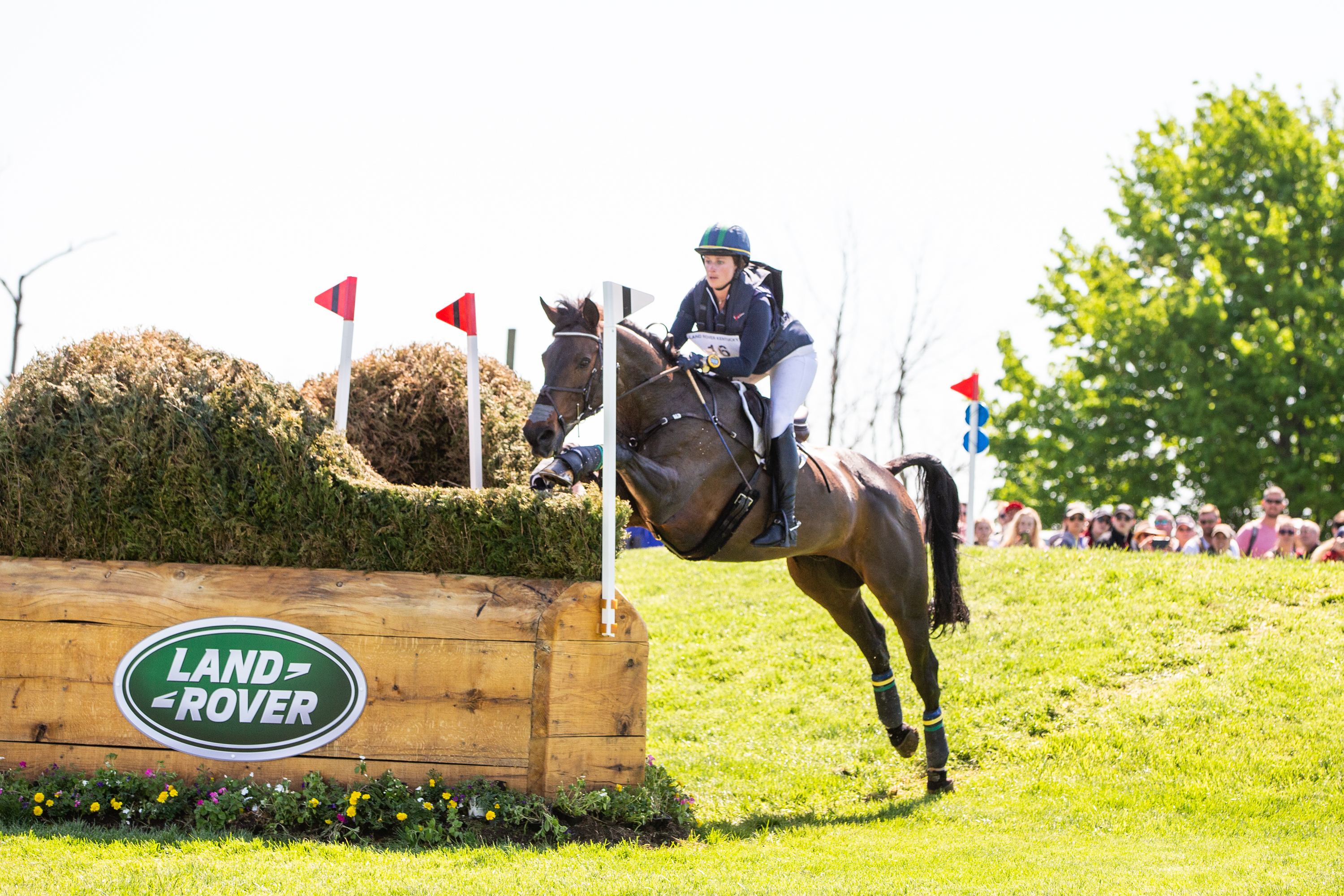
There was a lot of trouble at 20ABC, the Normandy Bank. Lillian Heard and LCC Barnaby, who finished in 16th, show you why. Riders had to jump onto a big bank with a ditch at its base. The size of the bank (3-foot-8) and the big effort it required made the horses take a short stride at the top. However, the distance between the top of the bank and the big corner at 20B (3-foot-9; 4-foot-9 with brush) required two galloping strides. The design question here required an aggressive approach, accuracy to the base of the ditch and a strong signal from the rider to attack the corner. That’s why they call Kentucky a five-star, folks—don’t try this in your living room.
To make this combination even harder, on the line to the corner Derek di Grazia asked you to ride forward downhill, which people instinctively avoid. (He did play fair with his horses and riders, however, because he had posed the same striding question earlier at the Rolex Grand Slam Challenge, 11ABC, but with milder terrain and easier obstacles to deal with.) When I walked the Normandy Bank, I thought it would take a lot of jumping, especially as horses are beginning to tire at this stage of the course.
Lillian did almost everything right here, but her strides didn’t work out as well as she had hoped. As a final level of difficulty, Derek arranged the last stride to the corner so that the horse was stepping down from a slope onto level ground. To the rider, this feels as if we had stepped down over one more step in the dark. It unbalances the horse just when he needs his balance—and his rider—the most.
Lillian has just realized all this and is in the perfect place to deal with it. She is behind Barnaby’s motion, and following his head and neck without losing contact. I see more and more riders turn their toes in when jumping a corner, as she is doing, in order to leave the flag up. Although Barnaby “splinter-bellies” the jump, she will land with a determined attitude and provide us with one of the few successful rides going the fast route through the Normandy Bank.
Daniela Moguel and Cecelia
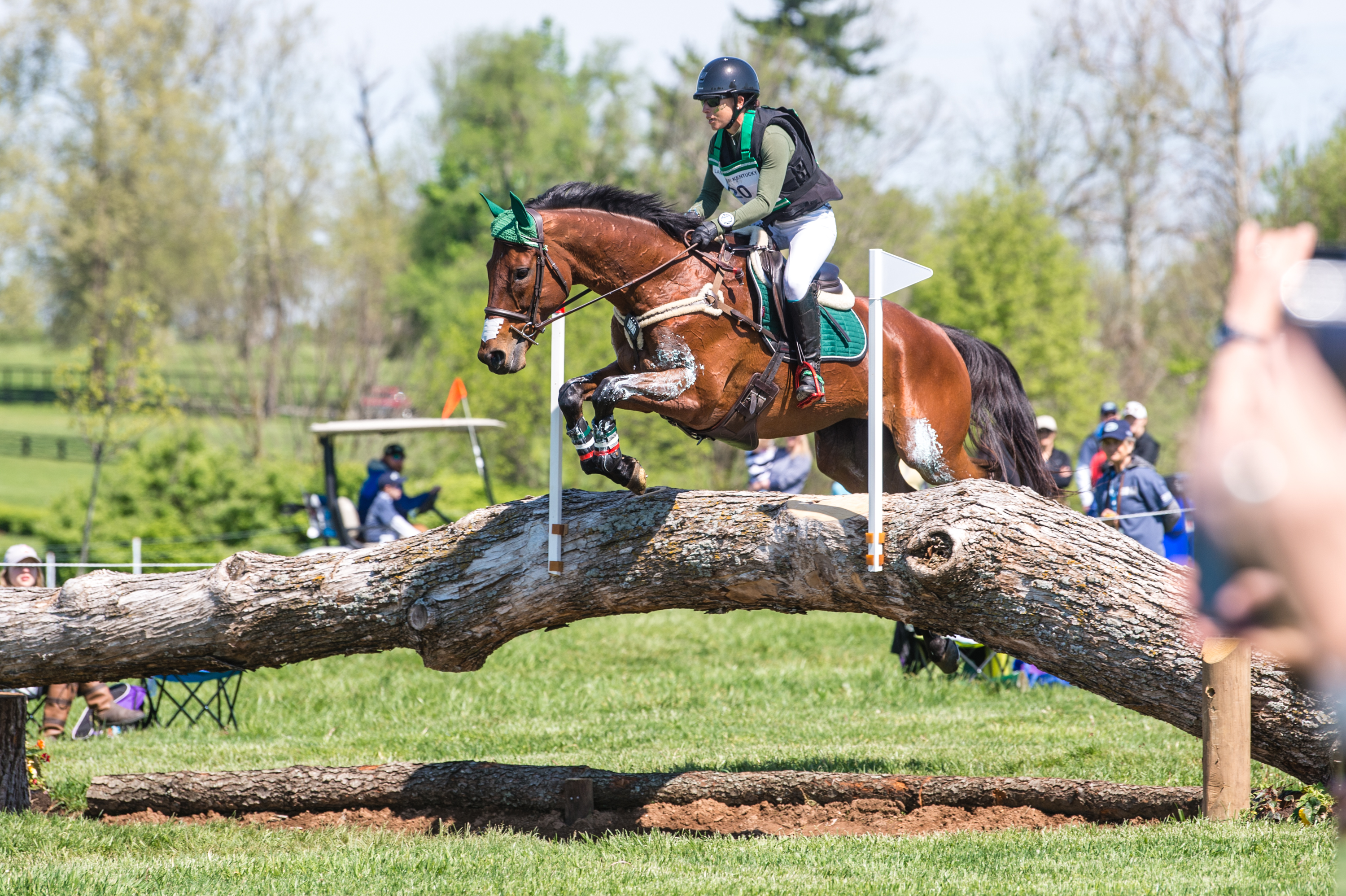
It takes a wonderful horse to jump around the cross-country course at Kentucky. When you have the sort of partnership that Daniela Moguel and Cecelia have, it’s beyond words to describe. It helps that Cecelia is a Thoroughbred mare with a heart bigger than she is and that she loves Daniela. Their partnership at Fence 9A, the Equestrian Events Overlook, is evident. Daniela trusts Cecelia enough to jump through a narrow opening at an angle, over a 3-foot-11 log with a spooky ditch underneath. The angle allows Daniela to approach the next element, a 3-foot-9 corner, directly. That strategy works for them, but you gotta completely believe in your partner to use it.
Daniela will stay closer to the saddle next time, so her center of gravity is closer to Cecelia’s. As long as Cecelia can use her head and neck and round her back, she doesn’t care if Daniela’s seat bones are 1 inch or 12 inches away. When we are farther away from our horse, however, we have a greater chance of losing our stability.
Allie Sacksen and Sparrow’s Nio
This article was originally published in the Summer 2019 issue of Practical Horseman.





